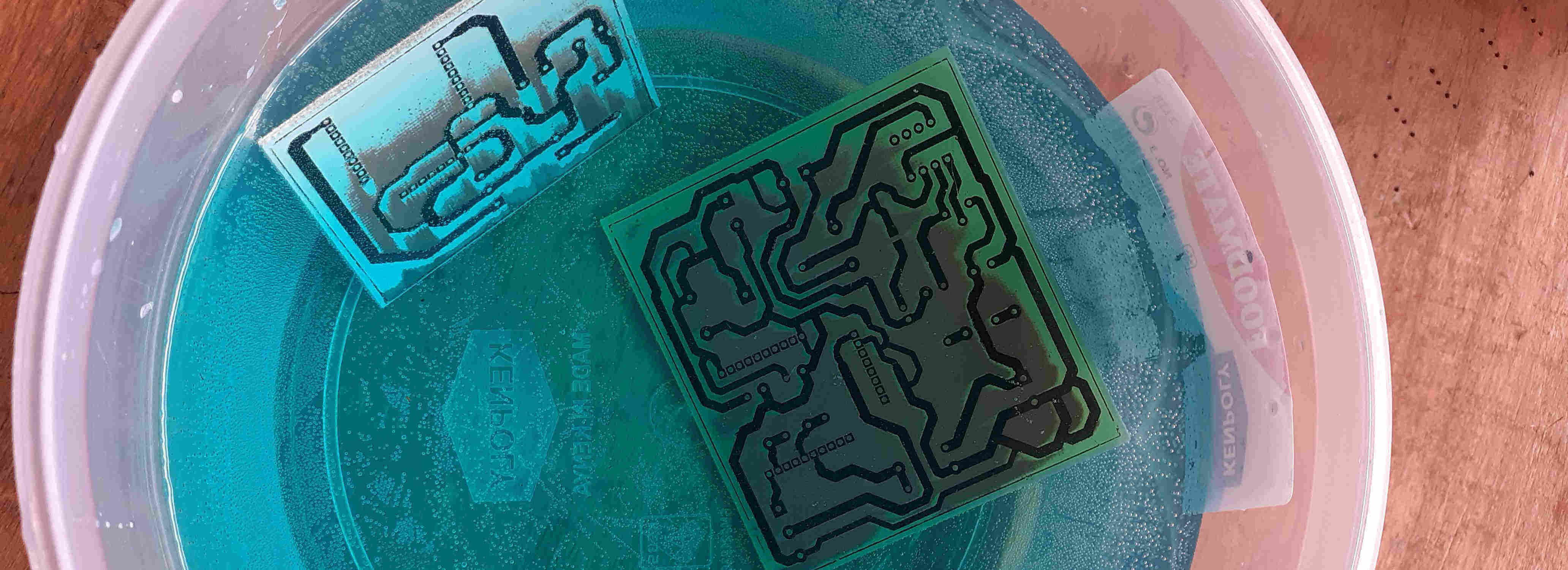

Etching is a subtractive method used for the production of etched circuit boards: acid is used to remove unwanted copper from a prefabricated laminate. This is done by applying a temporary mask that protects parts of the laminate from the acid and leaves the desired copper layer untouched.
Different machines and chemicals can be used for etching, which will affect the comfort, duration and quality of the result. Two Acid types that can be used for etching are ferric chloride and Sodium Per-sulphate. Although etching can also be done in simple plastic boxes, the quality of the results will improve when using a machine that controls temperature and constantly keeps the fluids in motion. There are small etching tanks with heating and air pump and there are small spray etching machines which can handle bigger PCBs and even the development and cleaning processes involved. The sprayer also decreases the etching time and the amount of acid needed.
I design the circuit board shown below using KiCad. KiCad is a free software suite for electronic design automation (EDA). It facilitates the design of schematics for electronic circuits and their conversion to PCB designs. Check out these KiCad Tutorials. After designing the boards, I produced a pdf of the designs and printed the pieces on A4 papers with toner (photograph papers(mate)) so as to facilitate the next step in the process.

Circuit layers(Left: prototype 1 - layout, Right: prototype 2 - layout(includes footprints of some power analysis sensors)).
The circuit layout is printed with a laser printer on paper (with toner (photograph paper)), put face-down on the laminate, and the toner is transferred from the paper to the copper using an iron. The print must be of a very good quality, little mistakes we usually tend to ignore in printed text can result in unusable traces or even cause short circuits. The transfer of the toner is a bit tricky as well. If temperature is too high, the toner gets too liquid and the tracks will blur. If the temperature is too low, the toner won’t stick to the copper. After the ironing you can’t pull the paper away just like that, without destroying half of the mask. Instead you have to put the laminate with the paper in a water bath and wait a while until you can start to cautiously scrub away the paper.
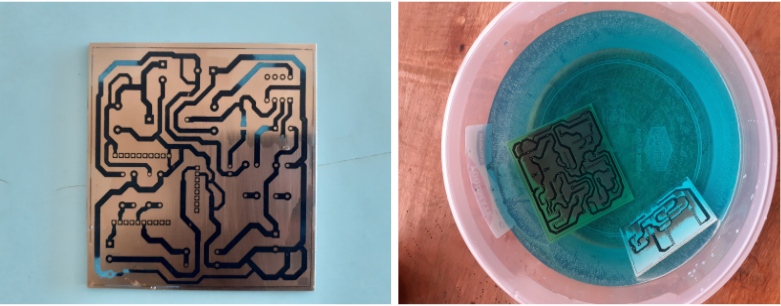
Left: Circuit layout on the copper board/laminate after the transfer from the paper, Right: Etching with Aluminum III Chloride (AlCl3).
⚠ CAUTION :Wear Protective Equipment when handling etching chemicals(Ferric Chloride and Sodium Per-sulphate) (eye protection and hand gloves)
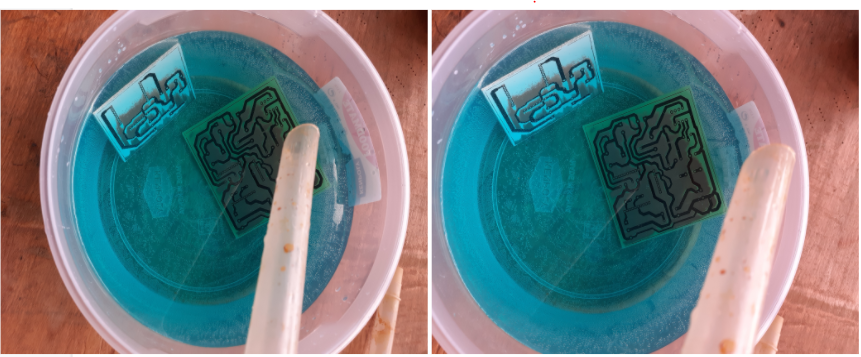
Etching (a little stiring is required).
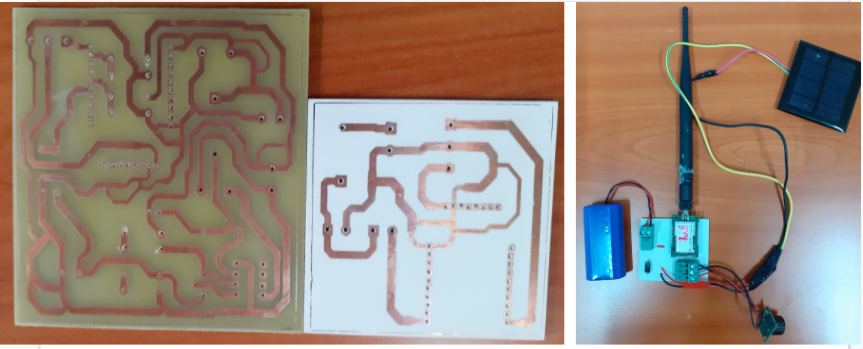
Left : Final product, Right: after placing the components.
Drilling of the desired drill holes is done carefully so as not to scratch the copper tracks using the drill bit.
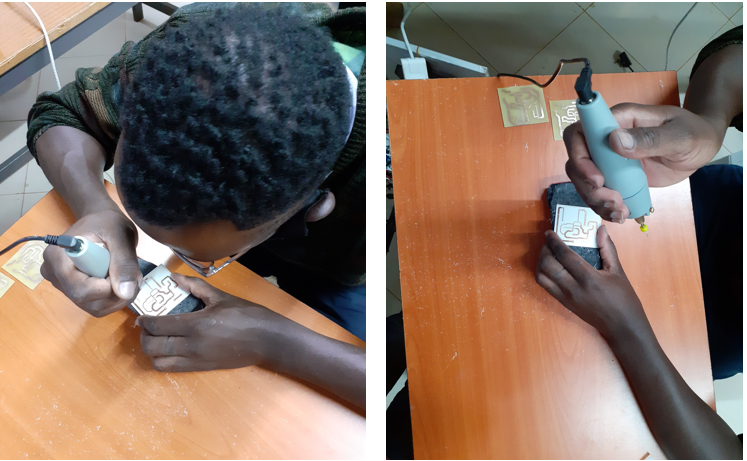
Drilling.
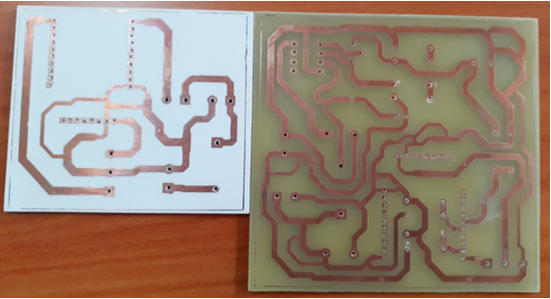
Final product after drilling.
After soldering / placing the components.
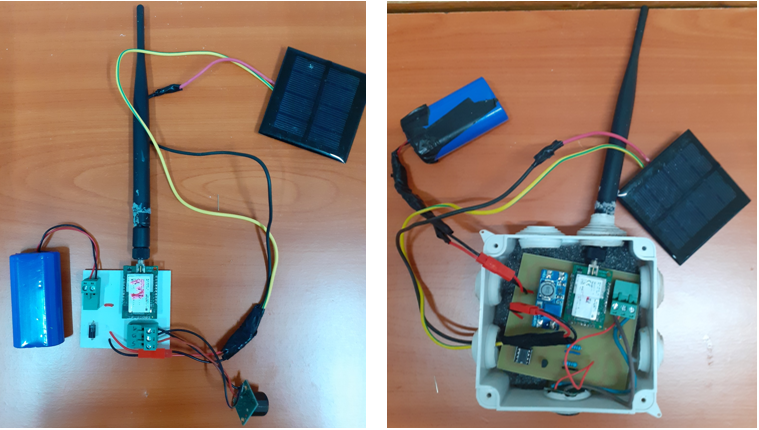
Prototype 1 & 2.
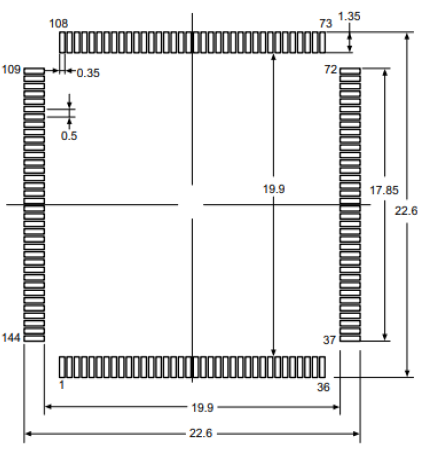
LOW PROFILE QUAD FLAT PACK (LPQF) microcontroller and microchip footprint.